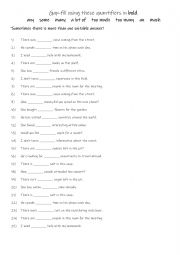
|
A1+-A2 Gap-fill using these quantifiers in bold: any, some, many, a lot of, too much, too many, an & much
Students familiarise themselves with the 8 quantifiers in bold. Then they read the sentences to see which quantifier is required to complete the gap-fill. Answers on page 2.
Level: elementary
Age: 8-100
Type:
Downloads: 111
|
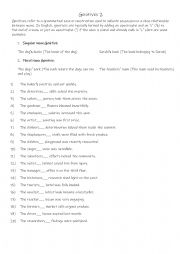
|
A1+-A2 Genitives (2)
This worksheet is suitable for A1+-A2 level students. Genitives refer to a grammatical case or construction used to indicate possession or a close relationship between nouns. Students complete the 20 sentences after reading the rules. Answers on page 2
Level: elementary
Age: 9-100
Type:
Downloads: 105
|
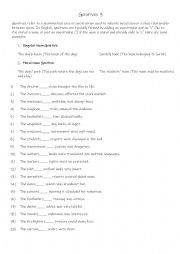
|
A1+-A2 Genitives (3)
This worksheet is suitable for A1+-A2 level students. Genitives refer to a grammatical case or construction used to indicate possession or a close relationship between nouns. Students complete the 20 sentences after reading the rules. Answers on page 2
Level: elementary
Age: 7-100
Type:
Downloads: 117
|
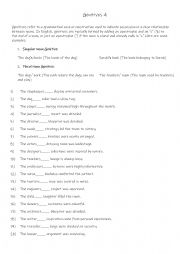
|
A1+-A2 Genitives (4)
This worksheet is suitable for A1+-A2 level students. Genitives refer to a grammatical case or construction used to indicate possession or a close relationship between nouns. Students complete the 20 sentences after reading the rules. Answers on page 2
Level: elementary
Age: 8-100
Type:
Downloads: 111
|
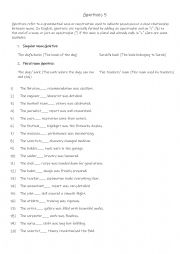
|
A1+-A2 Genitives (5)
This worksheet is suitable for A1+-A2 level students. Genitives refer to a grammatical case or construction used to indicate possession or a close relationship between nouns. Students complete the 20 sentences after reading the rules. Answers on page 2
Level: elementary
Age: 8-100
Type:
Downloads: 111
|
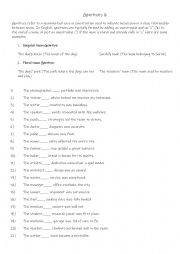
|
A1+-A2 Genitives (6)
This worksheet is suitable for A1+-A2 level students. Genitives refer to a grammatical case or construction used to indicate possession or a close relationship between nouns. Students complete the 20 sentences after reading the rules. Answers on page 2
Level: elementary
Age: 8-100
Type:
Downloads: 131
|
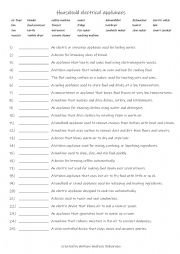
|
A1+-A2 Household electrical appliances
First, students need to familiarise themselves with the 25 words and their meanings Then they read the definitions to see which one is being described and write that word in the space provided. Answers on page 2.
Level: elementary
Age: 8-100
Type:
Downloads: 100
|
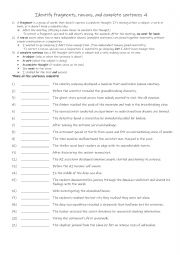
|
A1+-A2 Identify fragments, run-ons, and complete sentences 4
First, students need to familiarise themselves with the 3 types of sentences. Then they read the sentences to work out which one is which. Each type is used 7 times! Answers on page 2
Level: elementary
Age: 9-100
Type:
Downloads: 134
|

|
A1+-A2 Jobs - Who do I need to phone if....
Students familiarise themselves with the 25 jobs and what they do. Then students read each scenario and write down the type of job that will solve the problem. Answers on page 2.
Level: elementary
Age: 7-100
Type:
Downloads: 126
|
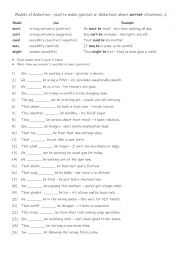
|
A1+-A2 Modals of deduction - used to make guesses or deductions about current situations. 2
Students should learn modals of deduction because they are useful for expressing logical guesses or assumptions about present situations, helping speakers show how certain or uncertain they are. These modals, such as must, might, could, and can�t, make speech sound more natural and fluent, improve communication and reasoning skills, and are commo...
Level: elementary
Age: 8-100
Type:
Downloads: 112
|












